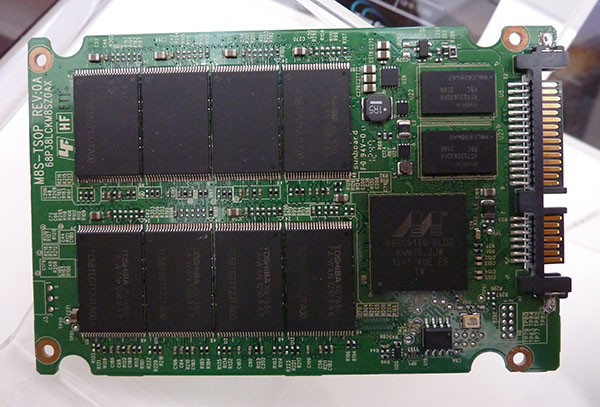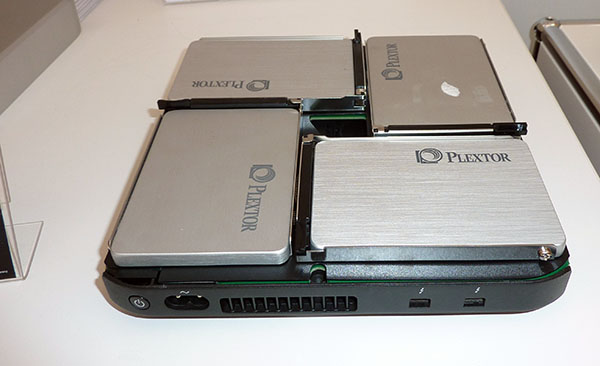Those who have been involved in technology for more than a few years will know that Plextor used to produce some of the most sought-after optical drives on the market. The firm has recently begun a push into the burgeoning solid-state drive segment through the release of the M5 range of 2.5in and mSATA drives.
SSD pricing has stabilised since the end of 2012, with medium-capacity drives available for just over 50p-per-GB. The majority of the price of an SSD is tied into the NAND chips that make up the capacity, so anything that can be done to reduce production costs is likely to trigger the release of cheaper models.
One method of reducing cost is to use what is known as triple-level cell (TLC) memory, where more bits of data are stored in each cell. Though this has a knock-on effect of reducing longevity, storing more bits per cell enables NAND manufacturers to decrease the size of the chips - to the tune of 40 per cent - and smaller chips tend to be cheaper than larger ones.
Samsung recently used TLC memory for its mainstream 840 SSD. Waiting on how the market views TLC-based SSDs, Plextor is looking to market a drive of its own in Q3 2013.

Here's the PCB of said TLC-bearing drive, shown at CeBIT 2013. The NAND is to be supplied by Toshiba and the controller chip is an updated version of the Marvell controller used on the M5 drive - model number 88SS9189. Plextor says that using Toshiba's TLC enables it to produce larger capacities, as the NAND chips are twice the size of Samsung's. This means we're likely to see a 1TB TLC NAND drive before 2013 is out.
Plextor also states that the drive, when released, will have a program-erase rating of at least 1,000 cycles, 80,000 random read IOPS and 72,000 write IOPS. Overall read and write speeds of up to 540MB/s and 465MB/s, respectively, are consistent with today's mainstream SATA 6Gbps drives. The real question, we suppose, is just how much cheaper these TLC SSDs will be than their traditional MLC counterparts.

Little is being divulged in terms of absolute performance but Plextor claims that four M5 Pros can sustain over 600MB/s. We suspect the transfer ceiling is closer to 1GB/s when optimised.
Though impressed as we are of the potential performance from the J4, the next real shift in SSD speed will arrive when the NAND is paired with a PCIe interface. Plextor reckons that we'll see such drives in 2013.













